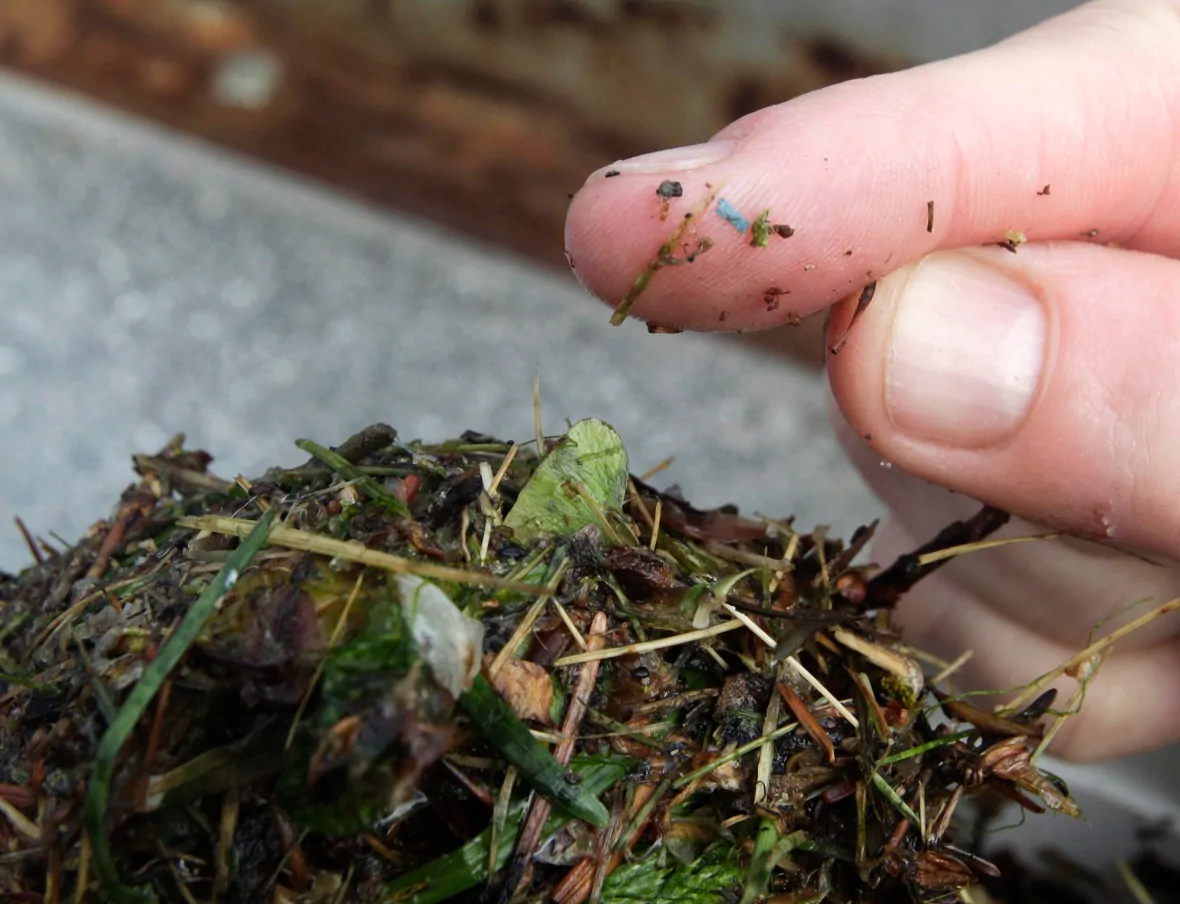Cotton fibres, microplastics pervade Eastern Arctic, study finds

Chelsea Rochman wasn’t surprised when her research cruise through Canada’s Eastern Arctic showed tiny plastic shards and other human debris in nearly every bucket she hauled aboard.
What puzzled her was the colour. The answer changed the way she looks at her wardrobe.
“Some of the particles that we sampled weren’t microplastics,” said Rochman, a University of Toronto scientist who has just published her research in the journal Facets.
“[They were] cotton textiles that have been dyed and used in clothing.”
Rochman sailed on the research icebreaker the CCGS Amundsen in the summer of 2017 to sample water, snow, sediment and plankton at 36 sites from south Hudson Bay all the way to Alert on the tip of Ellesmere Island.
She and her colleagues found microplastics — plastic fragments smaller than five millimetres — and other tiny pieces of human-generated debris in 90 per cent of the water and plankton studies and 85 per cent of sediment samples.
Although this was the first such survey conducted in the Eastern Arctic, the results weren’t a shock.
“There have been studies that have found microplastics in Arctic waters, in snow, in ice, in sediments,” Rochman said.
Long-range transport of particles
But this study presents important clues on where the fragments originate.
They don’t come from the Arctic, for one thing. The distance to the nearest community made no difference to the amount of debris in the water.
That agrees with previous research suggesting particles move northward through air or ocean currents.

Secondly, most of the fragments were in the form of tiny fibres. Most of those were cotton, not plastic, and most of them were blue, probably from somebody’s jeans, she said.
The concentrations weren’t large. The data suggests it would take, on average, more than four litres of Eastern Arctic sea water to find a single particle.
Impact on ecosystem still largely unknown
But they are everywhere. And there’s little understanding of “how microplastics will impact the Arctic ecosystem.”
Previous studies have found little difference in the rate at which cotton or polyester degrades.
“The cotton is, sure, a little bit faster, but it’s still really slow,” Rochman said.
Dyes and other additives add to the mix — and the uncertainty.
Preliminary tests on toxicity

“We are doing toxicity tests in our lab to look at the difference between polyester and cotton,” said Rochman.
“Right now, we don’t see a striking difference, but it’s all preliminary.”
Rochman points out that gradually increasing levels of microplastics and other fragments in Arctic seas is only one stressor on an ecosystem facing change on many fronts. Sea ice is in retreat; waters are getting warmer and more acidic; and human use is increasing.
The body of research is growing, she said.
“There’s certainly work that suggests microplastics can reduce the population of zooplankton. There’s work that shows how microplastics impact [bottom-dwelling] organisms.”
But there’s very little on human health impacts.
“More research needs to be done. The question we get from the local communities is, they really want to know how it affects the ecosystem and how it affects their country food.”
Wash clothes less often
A research paper released last fall by Vancouver’s Ocean Wise Conservation Association said about 880 tonnes per year of fibres from laundered clothes are released into waste waters in North America every year, although treatment plants do capture most of it.
Peter Ross, one of the authors, is vice-president of research at Ocean Wise and an associate professor of environmental studies at the University of Victoria. He’s been studying marine pollution for 30 years and microplastics for the last decade.
Synthetic fabrics such as polyester are likely to be “much longer-lived” in the environment, possibly “lasting hundreds if not thousands of years,” whereas natural fibres like cotton may degrade very quickly, Ross said.
Both, however, might be a problem for marine life in terms of suffocation and blocking the gastrointestinal tract, he said.
He said individuals can take several steps in reducing the release of microfibres.
“We can wash [our clothes] less. We can use cold water. We know that a little bit less soap and front-loading washing machines are gentler and lead to less loss of fibres.”
With files from CBC News
Related stories from around the North:
Canada: Can climate adaptation be culturally sustainable in the Arctic?, Eye on the Arctic
Finland: Finland behind on sustainable development goals, Yle News
Greenland: COVID-19 delay, early ice melt challenge international Arctic science mission, The Associated Press
Iceland: Ice-free Arctic summers likely by 2050, even with climate action: study, Radio Canada International
Norway: Norway to expand network of electric car chargers across Arctic, The Independent Barents Observer
Russia: Red alert for northern Siberia as heat shocks threaten tundra life, The Independent Barents Observer
Sweden: January temperatures about 10°C above normal in parts of northern Sweden, says weather service, Radio Sweden
United States: Temperatures nearing all-time records in Southcentral Alaska, Alaska Public Media



